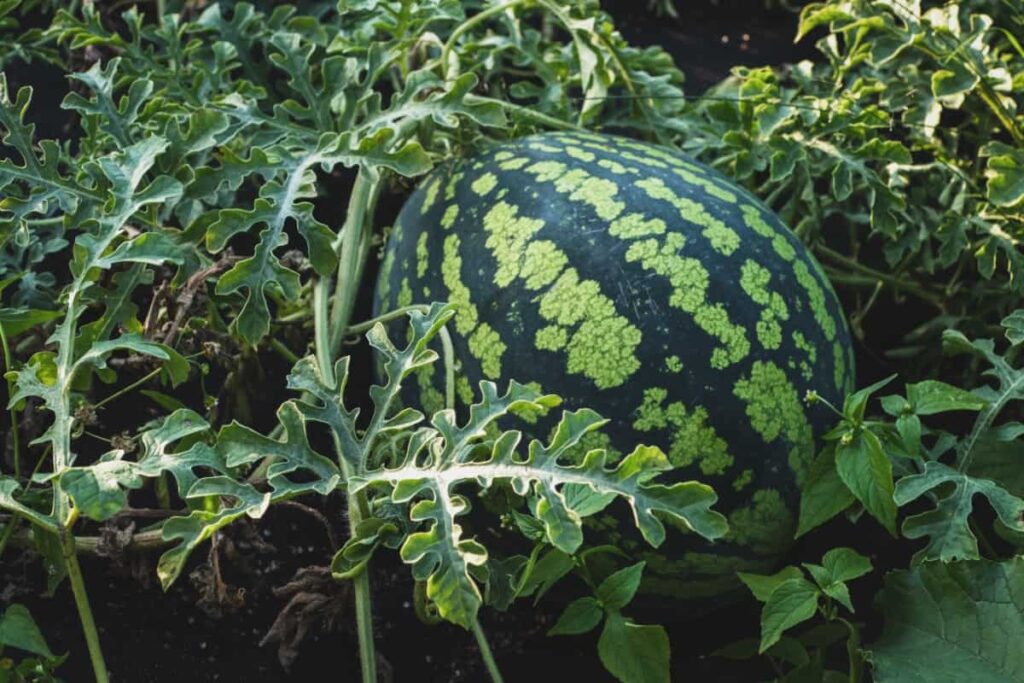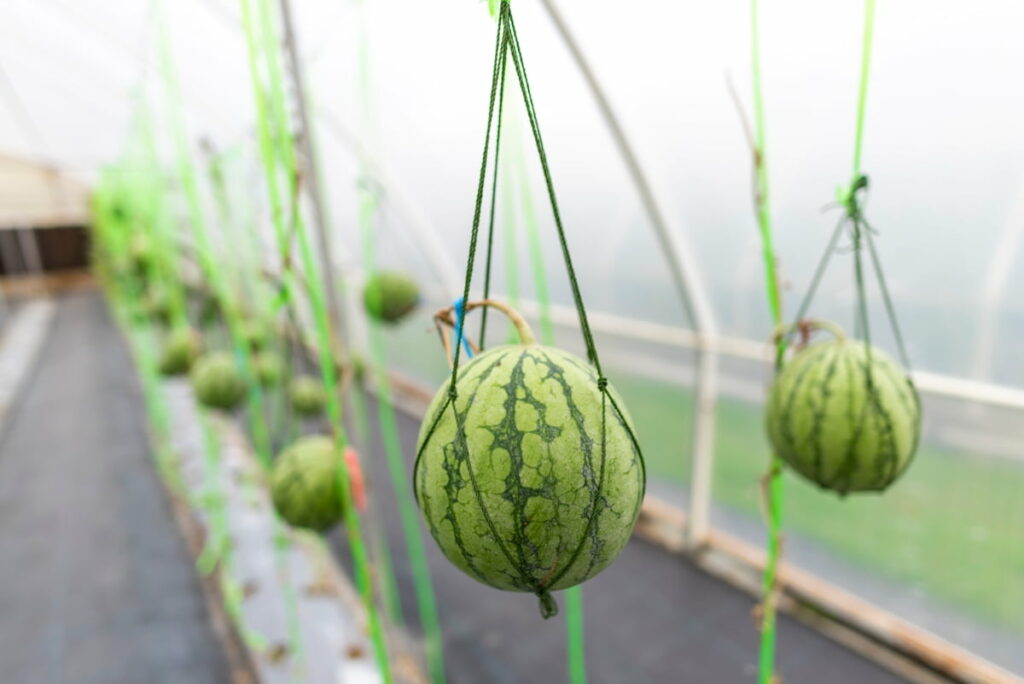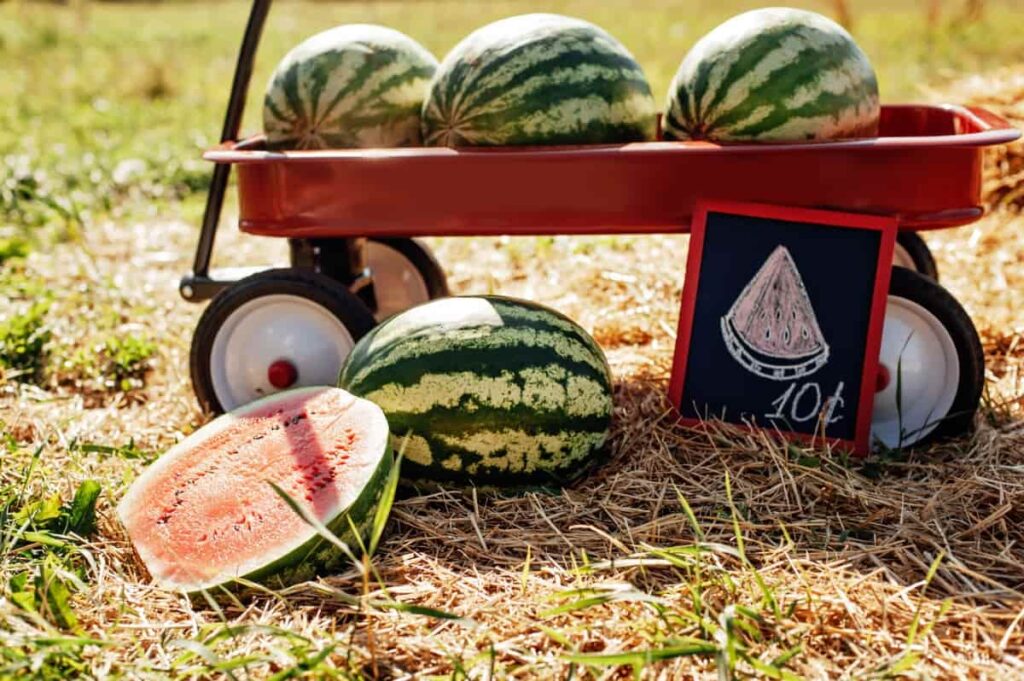In India, selecting the best high-yielding watermelon varieties is key to successful farming. Farmers seek top-producing cultivars with superior yields and resistance to pests. This expert guide explores the most efficient watermelon varieties, providing insights and tips for maximizing yield and enhancing overall production.

Introduction to High-Yielding Watermelon Varieties in India
Indian farmers are capitalizing on the lucrative watermelon crop by selecting high-yielding varieties. Adaptability to diverse climates, pest resistance, and exceptional yields characterize these top watermelon varieties. This post explores features and cultivation practices, emphasizing the profitability and success they bring to Indian agriculture.
Overview of Watermelon Cultivation in India
Watermelons flourish in India’s warm climates, thriving in well-drained soil and ample sunlight. Cultivated during the summer season from February to April, farmers utilize techniques like direct seeding and transplants across diverse agro-climatic zones. The country’s varied conditions provide an ideal environment for successful watermelon cultivation.
Importance of Choosing High-Yielding Varieties
Choosing high-yielding watermelon varieties is crucial for Indian farmers for optimal yield and profits. Top choices include varieties with increased productivity, shorter crop cycles, adaptability to local climates, and resistance to pests and diseases. These traits minimize the need for excessive chemical inputs, enhancing sustainable farming practices and overall crop success.
Top High-Yielding Watermelon Varieties in India
Sugar Baby: Early Harvest Variety
Sugar Baby is one of the most popular watermelon varieties in India. It is an early harvest variety that matures in 75 to 80 days. It has a round shape, dark green skin, and red flesh. It weighs about 3 to 5 kg and has a high sugar content of 12 to 14%. Sugar Baby is suitable for both fresh consumption and processing.
Characteristics of Sugar Baby Watermelons
- Early maturing variety that can be harvested in 75 to 80 days
- Round shape, dark green skin, and red flesh
- Weighs about 3 to 5 kg and has a high sugar content of 12 to 14%
- Suitable for both fresh consumption and processing
Best Practices for Cultivating Sugar Baby
- Sow the seeds in well-drained sandy loam soil with a pH of 6 to 7
- Use raised beds or ridges to improve drainage and aeration.
- Irrigate regularly and maintain soil moisture at 60 to 70%
- Guard the plants from pests and diseases such as aphids, fruit flies, anthracnose, fusarium wilt, etc.
- When the fruits are fully ripe and tap with a dull thud, pick them.
Arka Manik: Developed by ICAR
Arka Manik, a watermelon hybrid by ICAR, boasts a high yield potential of 40-50 tonnes per hectare with an oblong shape, light green skin, dark green stripes, and an 8–10 kg weight. Its deep red flesh contains 14-16% sugar. Being resistant to fusarium wilt and powdery mildew, it has strong characteristics for cultivation.
Features of Arka Manik Variety
- Hybrid variety developed by ICAR with a high yield potential of 40 to 50 tonnes per hectare
- Oblong shape, light green skin with dark green stripes, and deep red flesh
- Weighs about 8 to 10 kg and has a high sugar content of 14 to 16%
Agronomic Practices for Arka Manik
- Sow the seeds in well-prepared sandy loam soil with a pH of 6.5 to 7.5
- Use raised beds or ridges with a spacing of 2 x 1 m
- Irrigate regularly and maintain soil moisture at 70 to 80%
- When the fruits are fully matured and fragrant, harvest them.
Black Diamond: Known for Its Size
Black Diamond is a watermelon variety known for its large size. It is an open-pollinated variety that matures in 85 to 90 days. It has a round shape, dark green skin, and bright red flesh. It weighs about 15 to 20 kg and has a moderate sugar content of 10 to 12%. Black Diamond is suitable for both fresh consumption and processing.
Description of Black Diamond Watermelons
- Open-pollinated variety that matures in 85 to 90 days
- Round shape, dark green color skin, and bright red flesh
- Weighs about 15 to 20 kg and has a moderate sugar content of 10 to 12%
- Suitable for both fresh consumption and processing
Cultivation Tips for Black Diamond
- Sow the seeds in well-drained sandy loam soil with a pH of 6 to 7
- Use flat beds or ridges with a spacing of 3 x 2 m
- Irrigate regularly and maintain soil moisture at 60 to 70%
- safeguard the plants from pests and diseases such as aphids, fruit flies, anthracnose, fusarium wilt, etc.
In case you missed it: Watermelon Fertilizer Management: Application Schedule and Methods

Durgapura Meetha: Sweetness and Yield
Durgapura Meetha, a watermelon hybrid by Rajasthan Agricultural University, boasts a high yield potential of 50-60 tonnes/ha. With an oval shape, dark green skin, and light green stripes, it weighs 6-8 kg. The crimson red flesh is sweet (16-18% sugar), and it’s resistant to powdery mildew, showcasing drought tolerance.
Attributes of Durgapura Meetha
- Hybrid variety developed by the Rajasthan Agricultural University with a high yield potential of 50 to 60 tonnes per hectare
- Oval shape, dark green skin with light green stripes, and crimson red flesh
- Weighs about 6 to 8 kg and has a high sugar content of 16 to 18%
- Resistant to powdery mildew and tolerant to drought
Growing Conditions for Durgapura Meetha
- Sow the seeds in well-prepared sandy loam soil with a pH of 6.5 to 7.5
- Use raised beds or ridges with a spacing of 2 x 1 m
- Irrigate regularly and maintain soil moisture at 70 to 80%
- safeguard the plants from pests and diseases such as aphids, fruit flies, anthracnose, etc.
Asahi Yamato: Japanese Variety Adapted to India
Asahi Yamato, a Japanese watermelon variety, matures in 80-85 days, featuring a round shape, light green skin with dark stripes, and a 4-6 kg weight. With yellow, sweet flesh (14-16% sugar content), it’s versatile for fresh consumption and processing. An open-pollinated type, it stands out for its appealing appearance and high sugar levels.
Qualities of Asahi Yamato Watermelons
Asahi Yamato, a mid-season watermelon variety from the Indian Agricultural Research Institute, boasts medium-sized fruits (6-8 kg) with light green rind and deep pink, high-sugar (11-13%) flesh. With a 95-day ripening period, it excels in shelf life and transport quality, making it a beloved choice in India for its sweet, juicy taste.
Farming Techniques for Asahi Yamato
- Sow the seeds in well-drained sandy loam soil with a pH of 6 to 7
- Use flat beds or ridges with a spacing of 2 x 1.5 m
- Irrigate regularly and maintain soil moisture at 60 to 70%
- Safeguard the plants from pests and diseases such as aphids, fruit flies, anthracnose, fusarium wilt, etc.
Madhu: Resistant to Pests and Diseases
Madhu, a renowned watermelon variety in India, was developed by the Indian Institute of Horticultural Research in 2004. This hybrid boasts a high yield potential of 40-50 tonnes per hectare, featuring a round shape, dark green rind on the outside with light green stripes, and red flesh. Madhu watermelons typically weigh 8-10 kg, contributing to its popularity.
Advantages of Growing Madhu Variety
Madhu watermelon boasts resistance to major pests and diseases like anthracnose, gummy stem blight, powdery mildew, and fruit flies. This inherent resilience reduces the need for pesticides, enabling cost savings for farmers while protecting crops from common and destructive threats in watermelon cultivation.
Pest and Disease Management for Madhu
- Use certified seeds from reliable sources.
- Apply balanced fertilizers and organic manures.
- Use pheromone traps or yellow sticky traps to monitor and control fruit flies.
- Apply fungicides as per the recommendations of the local agricultural department.
Kiran: High TSS and Crisp Texture
Kiran, a high-yielding watermelon hybrid developed by IIHR in 2010, boasts a potential yield of 45-55 tonnes per hectare. With an oblong shape, light green rind, dark green stripes, and red flesh, Kiran weighs 10-12 kg on average. Its key feature is a remarkable total soluble solids (TSS) content of 12-14%, resulting in exceptionally sweet, juicy, and crisp watermelons.
Characteristics and Benefits of Kiran Watermelons
- Kiran watermelons have a long shelf life of up to 15 days after harvest
- Kiran watermelons have a uniform size and shape that makes them easy to pack and transport
- Kiran watermelons have a high market value due to their superior taste and quality
- Kiran watermelons are rich in lycopene, beta-carotene, vitamin C, and dietary fiber
Optimal Conditions for Kiran Cultivation
- Kiran watermelons prefer sandy loam soils with good drainage and organic matter.
- Kiran watermelons require a pH range of 6.0-7.0 for optimal nutrient uptake.
- Kiran watermelons need a temperature range of 25-35°C for germination, flowering, and fruiting.
- Kiran watermelons need proper spacing of 2 x 2 m between plants to avoid overcrowding and competition.
In case you missed it: Watermelon Farming Information Guide

Navodaya: Heat Tolerant and High Yield
Navodaya, a watermelon hybrid developed by the Indian Agricultural Research Institute in 2018, boasts a round shape, dark green rind with light green stripes, and red flesh, weighing 12-15 kg. Notably heat-tolerant, it withstands temperatures up to 45°C, making it ideal for hot regions. With a yield potential of 50-60 tonnes per hectare, Navodaya exhibits high water use efficiency, ensuring substantial yields with minimal water consumption.
Description of Navodaya Variety
- Navodaya watermelons have a short duration of 75-80 days from sowing to harvest
- Navodaya watermelons have a high germination rate of 90-95%
- Navodaya watermelons have a high fruit set rate of 80-85%
- Navodaya watermelons have a high flesh-to-rind ratio of 85:15
- Navodaya watermelons have a low seed content of 2-3%
Tips for Managing Heat Stress in Navodaya
- Use mulching materials such as straw, plastic, or grass to conserve soil moisture and reduce soil temperature.
- Use drip irrigation or sprinkler irrigation to provide adequate water and avoid water stress.
- Use shade nets or polyhouses to reduce the intensity of sunlight and prevent sunburn.
- Use growth regulators such as gibberellic acid or cytokinins to enhance fruit size and quality.
- Use anti-transpirants such as kaolin or calcium carbonate to reduce transpiration and prevent wilting.
In case you missed it: How to Grow Watermelon Faster: Best Tips to increase Flowering, Fruiting, and Production Yield

Conclusion
Opting for high-yield watermelon varieties in India is a smart move for farmers. By selecting top-producing cultivars with maximum yields and resilience to pests, farmers can improve their overall watermelon production. Implementing effective farming tips ensures a successful harvest, contributing to profitable and sustainable agriculture practices.
- Crops Grown in Summer Season: Best Choices for Summer Gardening
- Organic Pest Control for Tomato Farming
- How to Maximize Sheep Farming Profit
- Broccoli Varieties: Choosing the Right Cultivars for Your Farm
- How to Raise Pigs in Your Own Backyard: A Comprehensive Guide
- Budget Friendly Sheep Shed Ideas: Cheap and Low-Cost Tips
- How Much Do Cattle Farmers Make: Revenue Streams in Cattle Farming
- Management Pests and Diseases in Your Cotton Field
- Sheep Farming Business Plan for Beginners
